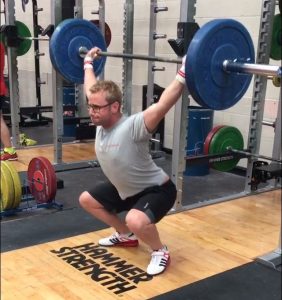Bloated Exercise Programming and How to Avoid it
Say NO Bloated Exercise Programming!
One of the first things I ask new personal training clients is what kind of exercise they have been doing up to them getting in touch with me.
The answer is varied, but one of the more common mistakes I see is bloated exercise programming, with far too many unnecessary exercises. It’s a throwback from the bodybuilding workouts that were so popular in the late 90’s/early 2000’s.
A quick way to avoid bloated exercise programming is by following this mantra…
If you can’t justify the inclusion of an exercise, get rid of it.
When it comes to training I’m a fan of the ‘minimum effective dose’ approach.
Here’s how I decide my exercise selection and avoid bloated exercise programming…
- Decide outcome/goal for the workout – strength, fat loss, cardio, rehab etc.
- Assess requirements – particular movement patterns that have been neglected/need extra work.
- Assess energy levels/fatigue.
- Select exercises around that information, discarding anything I’d planned but don’t need.
Train.
Removing exercises is the antithesis of the bodybuilding approach, which focuses on variety.
The thing is, most of us aren’t bodybuilders. We don’t have the genetics of bodybuilders and in most cases, don’t have some of the supplemental chemical help that they have.
The ‘hitting the muscle from different angles’ idea is largely unnecessary for most of us. Given muscle systems are interconnected, it’s impossible to isolate muscles effectively anyway. It just leads to bloated exercise programming.
Trying to hit a given muscle from all kinds of different angles is a way to potentially cause injury and muscle imbalance. I know this from personal experience – stupid youthful training approaches leaving me muscle imbalances that I’ve since had to correct.
If you come from the school of thought that more is more, the message I’m trying to get across to you here will seem like utter nonsense…
I can understand that, but don’t confuse volume of training with the number of exercises.
Under the right circumstances, I’m a big fan of high volume workouts – I use them myself and with my personal training clients. I’m just not a fan of bloated exercise programming with too many exercises that don’t pull their weight so to speak.
Select the most effective, most efficient exercises for you workout.
Do those.
Anything more than you need, you enter injury territory. You’re putting stress and strain on connective tissues that in the case of new or inexperienced lifters, just won’t be able to handle it. There’s also the muscle imbalance risk, which can cause all kinds of problems that may lie dormant for years.
With a focus on removing exercises in a programme, the obvious question is can you seriously have an effective workout with such few exercises?
The answer is yes, of course you can.
Intensity and volume are variables beyond the exercises themselves. Also, the exercises are selected because they are effective and efficient – compound movements illicit a greater hormonal response and allow more muscle to be trained in less time, with lower stress loads on the joints.
I’ve recently started Olympic Weightlifting. I’m in the early stages of this obsession so am reading and watching lots on the topic. I happened upon this video of the Chinese Weightlifting team training and it’s incredible (well, I enjoyed it anyway!)
There are only two competitive lifts in Weightlifting – the Snatch and the Clean and Jerk. This means from a training point of view, the exercise selection of the professional weightlifters is minimal in the extreme. Plus, their training goal is simple – to be stronger, better weightlifters.
Weightlifters are the masters at removing excess from their training programmes. You didn’t see 15 different bicep exercises in the video, but you saw a lot of incredibly strong guys in great shape, all from a handful of exercises, done well and done often.
If you are finally coming round to the idea that you don’t need 10 exercises for an effective training session, I’ve linked to a few workouts I’ve done in the past so you can use those as inspiration, or follow the workout in their entirety…
- Check out this workout, where I had a beast of a strength session with (apart from warm up) only 4 exercises. That’s right, 4.
- Here’s a leg workout with only 4 exercises.
- A high volume strength session I did, where I performed a whopping 5 different exercises!
If you’re going to train this way, you could do with the correct equipment. Here’s a couple of bits of kit I use…
A few final notes on avoiding bloated exercise programming…
- When you are performing fewer exercises, each set and rep has to count. You can’t half-arse these sessions. Make the reps count.
- The exercises you select have to be compound exercises. There’s no room for isolation exercises in this style of programming.
- Intensity is key. Work hard, keep your rest periods short. Volume can be adjusted up or down depending on goals, phase of training, energy levels etc.
Enjoy the results and the shorter, more effective workouts!




One thought on “Bloated Exercise Programming and How to Avoid it”